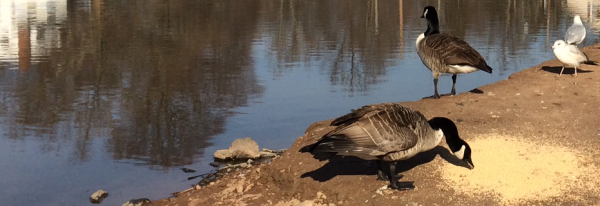Canada Goose Management
Our management plans generally follow Canadian Geese’s seasonal timeline.
Mating season generally starts in February, where geese pair up and scout nesting sites. Then in March/April they're sitting on eggs. Goslings hatch in May-July. Molting generally lasts from June to August and pond hopping and foraging occurs from August to February.
Although most people start thinking about geese in June and July, however, it's in February that you need to start the process of Canada Goose eviction.
To develop a goose management plan for resident Canada Geese, the plan must have three components:
- Limit Reproduction
We can limit reproduction by addling eggs. Addling is the most effective method to curtailing reproduction. Nests must be federally registered. Addling can involve oiling, removing the nest, or replacing the eggs with dummies. We prefer not to remove the nests because the geese will simply find another site in the immediate area to build a new one. As a result, the geese will simply hatch another set of goslings.
Geese return home every year to the same location. Though they may move around, they always return to the place of their birth during mating season.
- Site Aversion
Canada geese are protected under the Migratory Bird Act of 1918, which means a dog cannot make physical contact with the geese. This is where our border collies come into play. While the dogs will not come into physical contact, we still want the geese to believe that the site is not safe. This is where hazing is a key role. We want to encourage the geese to leave the property.
- Change the Habitat
There are several options available:
- Reducing the food supply.
- Reduce the sense of security that geese have for the area.
- Reduce the ability of the geese to move easily between land and water.
- Reduce the available nesting sites.
- Provide alternate foraging areas.
The most important is for people to stop feeding the geese. They do not need humans to provide food for them. They naturally forage for themselves. By providing for themselves, geese consume the correct natural feed to keep them healthy. Additionally, if geese consume too much protein via human food or commercial feed, they can become deformed and develop 'angel wings'. This makes them physically unable to fly away, protect, and feed themselves.
See the printable Landscape Modification PDF for more in-depth information.
